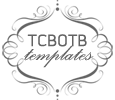Black Elk's Vision: A Lakota Story
By S.D. Nelson
Abram's Books, 2010
47 pages
Traditional Literature
In Black Elk's Vision, Nelson brings to life the vision and stories of Black Elk, a Native American from the Lakotas. As a young boy he learned to fear the Wha-shi-choo or white men. It was also during this time, 4 years old, that he saw a vision of which he told no one for fear of humiliation. A few years later, at age 9, he came down with a fever and was very sick. He saw a vision and walked into the clouds where he saw what seemed to be the Circle of Life in the clouds. He also saw the Six Grandfathers who gave him 3 gifts, a wooden cup filled with water (power to give life), a bow and arrow (power to destroy life), and a red stick that sprouted four leaves (tree of life). The men then faded into his parents waiting by his bedside. Black Elk kept his vision to himself. After that his people came to him when they were sick. At this point the Wha-shi-choo began to kill off the buffalo, start wars, and force the Indians onto reservations. When he was 12, the Wha-shi-choo attacked. The Battle of the Little Bighorn was a victory for the Lakota and Cheyenne Indians, but it caused them to flee and eventually led to suffering and starvation. They eventually had to surrender their way of life for there was nowhere else to turn. At the age of 16, he shared his vision with his people due to the guidance of Black Road, an old medicine man. Soon after Buffalo Bill Cody offered some of his tribe a job performing in his Wild West show. Black Elk took this as an opportunity to learn about the white people. He traveled across the world and then came back to his people. Soon after, in the battle at Wounded Knee, the Lakotas fought their final fight. Black Elk was shot in the stomach and lived to tell his story. They now live at the Pine Ridge Reservation, no longer free to roam the plains. He ends his story by passing the cup of water and bow and arrows on to us.
Nelson's layout of this book is captivating and is what originally grabbed my eye. He includes some of his own artwork alongside images from the past. His images are created with acrylic or black pencil. He also includes one drawing from Red Horse. Nelson's borders are derived from traditional Lakota geometric patterns. I enjoy how the illustrations are shown like a history book yet the text is read like a story. It is a beautiful blend. This book seems more historical than traditional literature as it was classified. I assume it was classified as such because it was a story that was passed on through the Lakota people and eventually put into a book because of Nelson and his research.
This story would not be appropriate for younger grades. I would probably not use it till the third grade, but there are a lot of neat features and ways to use this book. First you could use it as a multi-cultural book to tell the story of the Native Americans and their struggles with the white man. It is also a great history resource. The book contains many text features that would be appropriate for third grade also. This book would be a great discussion starter for upper elementary students. You could research and debate the two sides of this story, the white man and the Native Americans.
